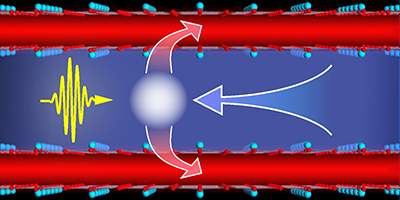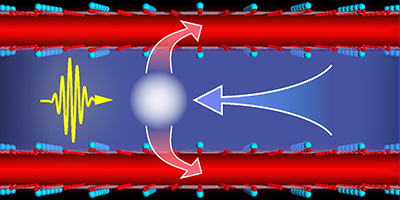Making Superconductors Sturdier
The vanishing resistance of superconductors makes them ideal materials for electrical circuits. However, superconducting materials remain impractical, because of the low temperatures at which they work. This happens because superconducting states are highly susceptible to thermal noise, which disrupts the electronic long-range order needed to maintain superconductivity, inducing a transition to a nonsuperconducting state at the critical temperature. Now Samuel Denny, from the University of Oxford, UK, and colleagues propose that exciting superconductors with pulses of terahertz radiation could allow them to be transiently cooled (much like the laser cooling of atoms), reducing the impact of thermal noise.
The authors consider a model superconducting cuprate material formed of stacked bilayers, where current flows perpendicular to the layers. The material is then subjected to a terahertz electromagnetic wave that excites the material’s vibrational modes (phonons). These, in turn, transfer their excitation to plasmons (collective excitations of the electron plasma), up-converting their frequency. By tuning the terahertz driving frequency, the researchers calculate that this system can be made to work much like a fridge, actively pumping heat out of the low-frequency plasmons. This helps protect the materials’ long-range order from thermal noise and could make superconductivity more “robust.” For instance, more current might be carried through the material without breaking the superconducting state.
The proposed method was studied for superconductors already cooled below their transition temperature and only remains effective for a few picoseconds after terahertz driving has been turned off. But the authors suggest that similar strategies, based on laser-cooling techniques, might one day help increase the critical temperature of a given material.
This research is published in Physical Review Letters.
–Katherine Wright





